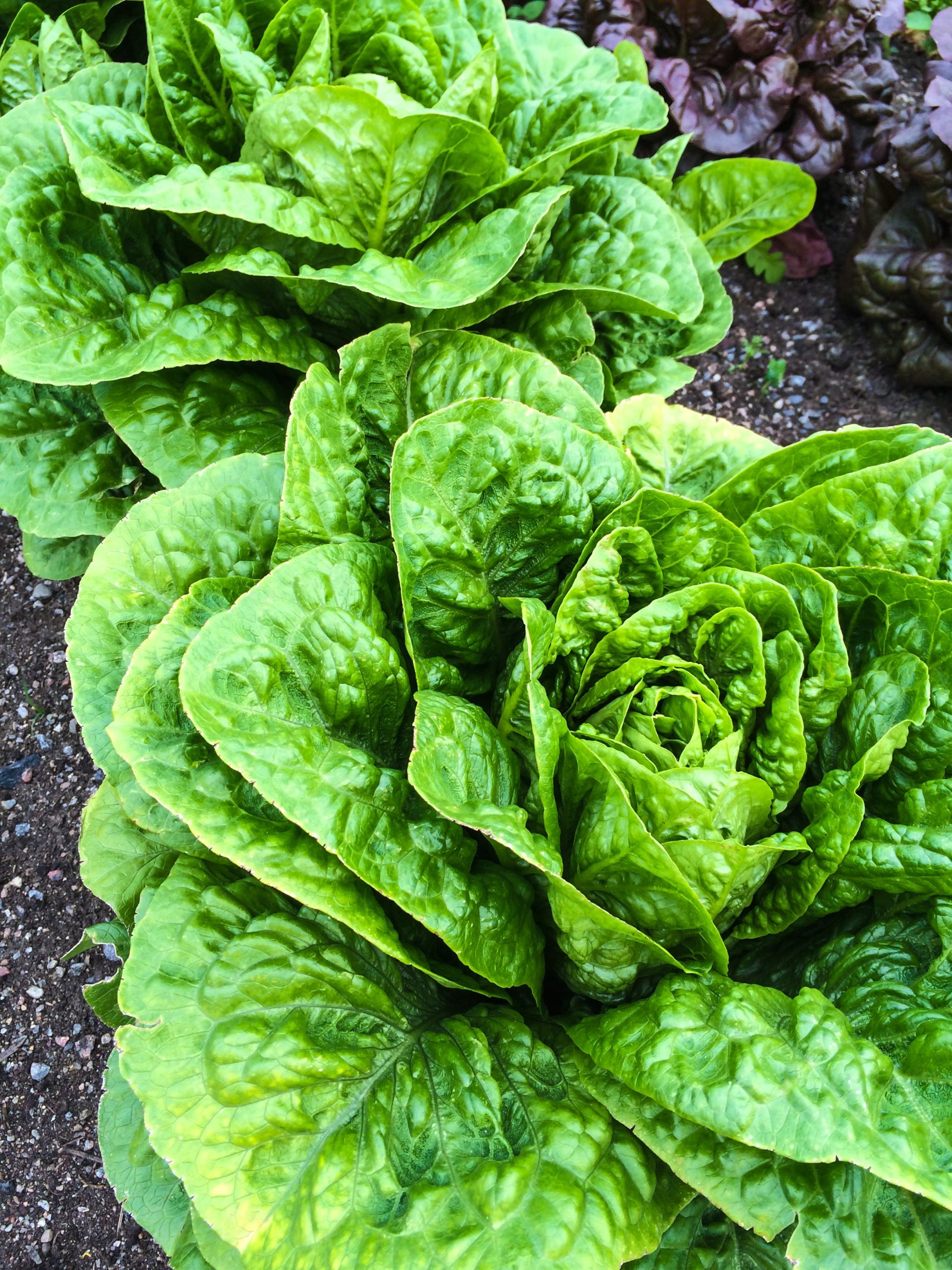Growing lettuce is easy when you know what you are doing. Here I explain how to grow lettuce from seed or regrow from lettuce. It grows quickly and is a cool season crop. See below for my videos about growing leaf lettuce and growing romaine lettuce from seed.
Lettuce grows well in growing zones 2 – 11 as long as you plant it at the right time of year. Lettuce doesn’t like extreme temperatures. If you plant late in the season, you can choose a faster maturing variety.
You can plant lettuce seeds directly in the ground, in a garden bed, in containers on the patio, or in grow bags. To grow lettuce, you don’t need a carrier of pollen to produce the leaves. This makes it ideal to grow indoors, in a greenhouse, or hydroponically.
In most areas, lettuce is ready to harvest in spring and autumn, depending on when you plant it. Typically, when hot weather strikes, lettuce plants bolt. This means they go to seed and stop producing lettuce leaves.
It takes time and money to grow a garden. It’s disappointing when you spend money on nutritious soil, etc. and don’t yield a harvest. If you want to cultivate a lettuce garden or grow lettuce in pots, continue to learn how to be successful growing lettuce plants.
How to Grow Lettuce
You can grow lettuce from seeds, seedlings, lettuce plant starts, or from existing lettuce scraps. I wanted to take a second to say, it’s very important to start with organic. Buy organic lettuce seeds over non-organic. It’s worth the negligible price difference, and they will be non-GMO.
If you plan to regrow lettuce from scraps, buy organic as well. Your local library may have a seed program. If so, those would be excellent seeds as well. They are also free.
You’ll also want to consider:
- The time of year you are planting
- Your climate
If you are late in the season, you’ll want a faster maturity variety. Some lettuce varieties will be ready to harvest in 30 – 40 days while others take 60 – 80 days. In addition, there are some types of lettuce that are more heat tolerant or cold tolerant than others. If you live in a mild, temperate climate, it won’t matter as much.
Below I discuss lettuce varieties, how many days to maturity and harvest, and which are better for hot and cold climates.
What to Know
Lettuce is an annual. This means you grow it, it produces, and then the plant dies. It won’t grow back the next season. The scientific name for lettuce is Lactuca sativa. It’s one of the easiest vegetables to grow making it ideal for beginning gardeners.
In general, there are four types of lettuce:
- Loose-leaf
- Romaine
- Head lettuce: Butterhead, Crisphead (Iceberg)
- Stem: where leaves grow off a central stem
If you don’t have a lot of patience, time, or space, I recommend starting with loose-leaf, romaine lettuce, and butterhead. They grow faster than iceberg lettuce. Another advantage is you can harvest the leaves, and they’ll keep growing. My family enjoys the taste of Parris Island romaine and Black Seeded Simpson leaf lettuce. There is no bitter taste.
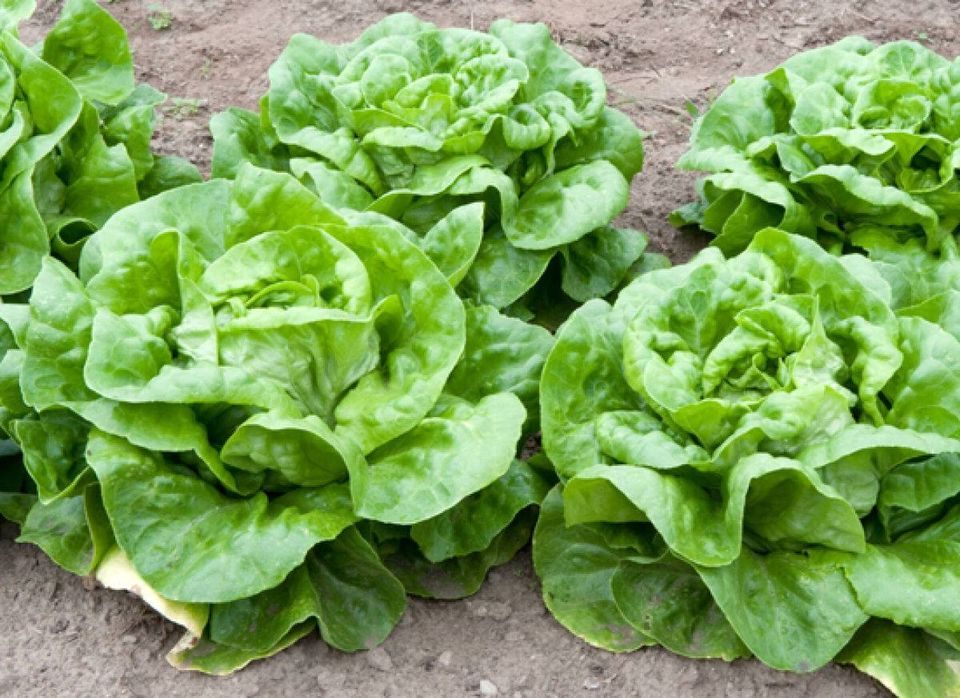
When to Plant Lettuce
Before you start, keep in mind that lettuce only thrives in cool weather. In most areas of the country, it thrives in the spring and fall. Lettuce seeds germinate in temperatures between 35 – 75 degrees F, depending on the variety you plant. Ideal temperature is 70 – 75 degrees.
When the soil is easy to work on in the spring, you can begin planting romaine, leaf lettuce, or head lettuce seeds or seedlings.
If you live in a hot climate (hardiness zones 8 – 11) you’ll want to plant lettuce sooner. This will likely be in February, March or September to avoid growing in the summer heat.
Some lettuce varieties mature in the space of 30 days, while others can be harvested earlier as microgreens. You can also regrow lettuce from the base of a lettuce you buy from the grocery store.
Again, much depends on your climate. In zones 9 and 10, you’ll be able to grow in the winter months and not in the summer months.

Where to Grow Lettuce
The best place to grow lettuce is in a location that receives a minimum of six hours of sunlight per day. Some lettuce varieties require full sun while others will thrive in full sun and partial shade.
Also, if you want to plant lettuce during the summer in a moderate climate, ensure that you use a partial shade to protect the patch from the sun’s glare in the afternoon.
If you grow lettuce seed in the late summer, you will have to cool the soil for germination with sufficient artificial shading. When the temperature gets cooler, you can remove the shade and give the young lettuce plants enough sunlight for growth.
Be sure wherever you choose that pests, such as rabbits, won’t be able to get at it.
Growing in Containers and Bags
Lettuce is an ideal container gardening vegetable because it has shallow roots. This means the container doesn’t need to be deep. It needs to be well-draining though.
Growing lettuce in containers is a great way to garden when you don’t have space. It enables you to enjoy fresh vegetables in a mini garden on a balcony.
Loose-leaf lettuce is also easy to grow in grow bags. You’ll also have the advantage of being able to move the bags around. Head lettuce not good for bags because it’s more top heavy.
Soil for Growing Lettuce
Start with nutrient-rich potting mix filled with organic matter. You can buy organic soil amended with compost or manure. Lettuce plants thrive in cool, loose soil with good drainage. It like to be moist but it needs to drain so you can avoid root rot.
Lettuce grows well in soil with a pH level of 5.5 – 6.5 which is acidic to neutral. You can add coffee grounds to help with acidity. If it’s too acidic, you can add lime to the soil.
If you’re a beginner gardener, don’t worry about pH unless you live in an area with poor soil. Just buy the best potting soil you can afford, and it should grow well. You can add in a slow-release, high-nitrogen fertilizer after your second planting.
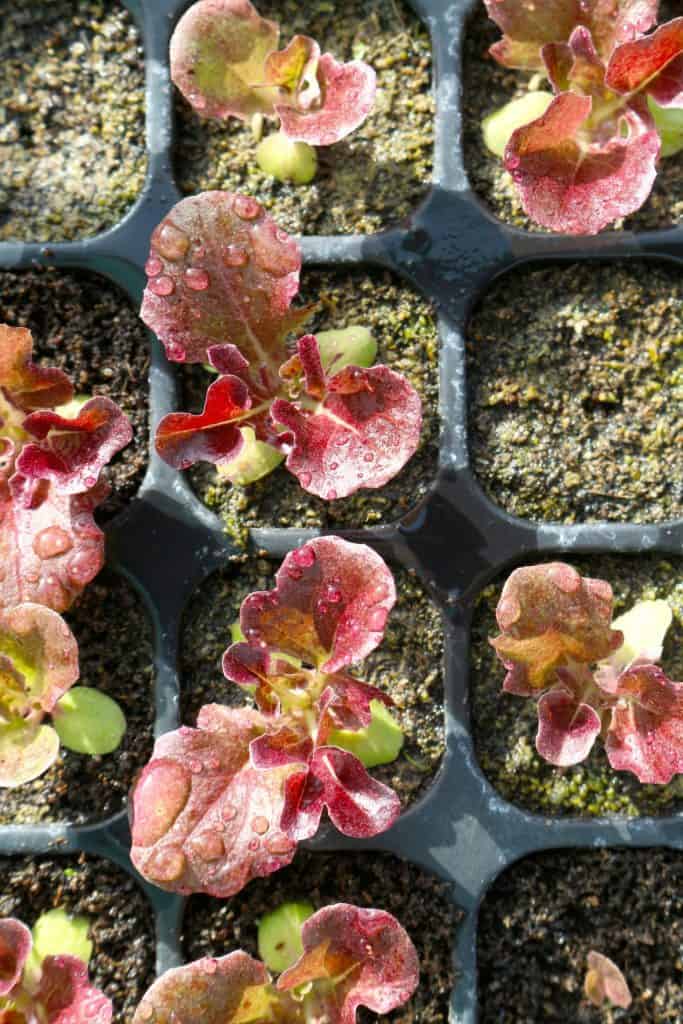
How to Grow Lettuce from Seed
Lettuce is easy to plant and easy to grow from seeds.
- Check spacing on the type of lettuce you plant by looking on the seed packet. In general, plant seeds a minimum of 6 – 12 inches apart.
- Put 2 – 3 lettuce seeds per hole.
- Plant seeds ¼ to ½ inches deep.
- Cover with a thin layer of soil.
- Gently water.
If you are planting in rows, space rows approximately 12 to 18 inches apart for sufficient air circulation.
Once the seeds germinate, you will need to thin lettuce seedlings when they are 3 inches. In each grouping where you have more than one lettuce plant growing, snip the weaker seedlings and keep the larger one.
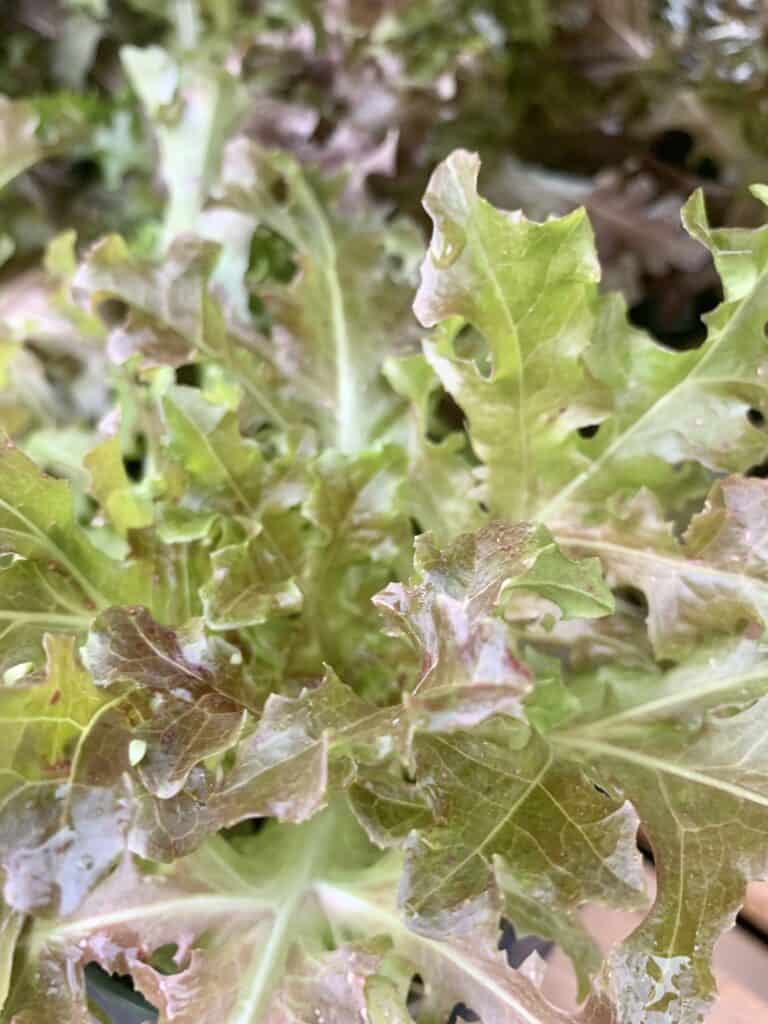
How to Grow Lettuce from Scraps
Learning how to grow lettuce from scraps is easy. You can regrow lettuce from stems and stumps that you would otherwise throw away or compost. You can do the same to grow celery from the discarded base.
Use the bottom from romaine lettuce or a head of lettuce. Romaine is easiest to grow from grocery-store lettuce.
- Cut lettuce leaves one inch from the bottom
- Place the end (the stump) cut side up in a shallow bowl with water
- Place in sunny area
- Change water every day or two
- After 10 – 15 days, it will stop growing
You won’t be able to grow the full head, but you will grow leaves. Pick them before the main stalk shoots up. The longer you wait to harvest the leaves, the more bitter they will be. You can plant the rooted end; however, it won’t grow much past two weeks. It’s easiest to keep it in water.
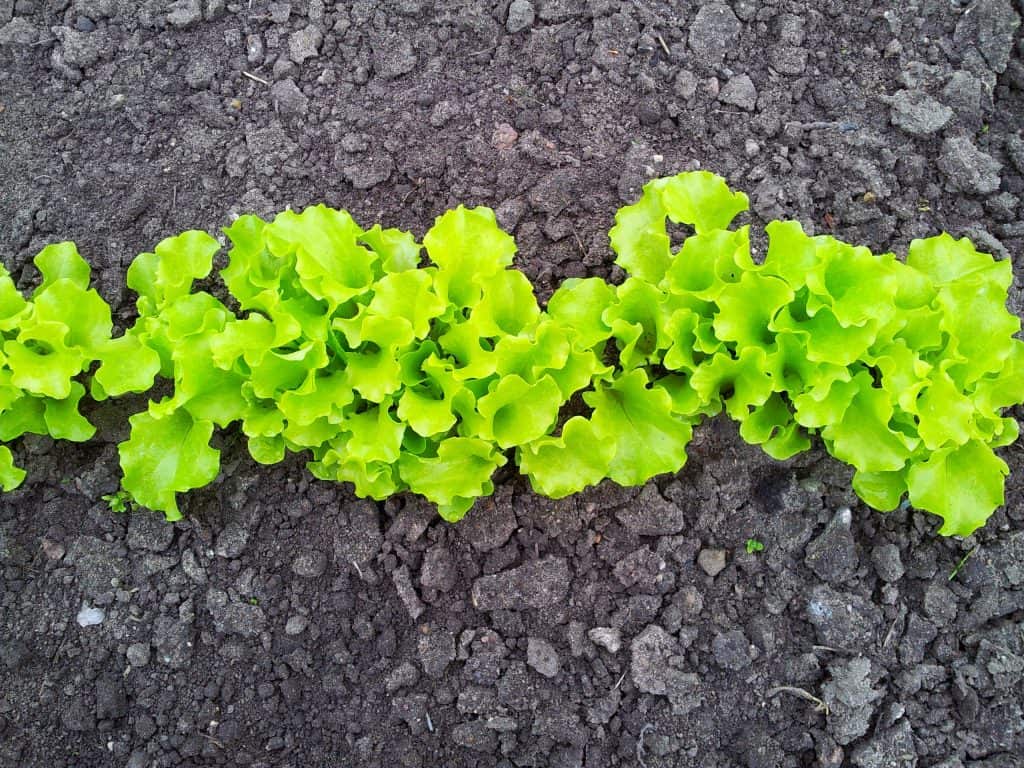
How Often to Water Lettuce
When it comes to watering lettuce, you should water lightly, frequently, and consistently.
A light watering daily is typically sufficient. Pay attention to rainfall.
You want to keep the soil moist but not waterlogged. Over-watering can cause the root to rot and also make room for disease and stunted growth.
Pests and Disease
Your lettuce patch will be vulnerable to diseases and pests if you don’t set up protective measures. Aphids are one of the many pests that can cause damage to your lettuce. They are sap-sucking insects that cause the leaves to curl and wilt as the lettuce’s nutrients and water are drained away. These insects also leave behind diseases and create room for molds.
Since there isn’t a particular cure for aphids, natural predators such as ladybugs can easily feed on them. You can also try to drive them away with garden soaps and neem oil.
If caterpillars, snails, or slugs constitute a problem in your lettuce patch, you can easily handpick them or make use of an insecticide. Also, if your lettuce begins to turn brown and curl at the edges, this might be because there isn’t enough moisture in the soil. Ensure that you stick to a consistent watering regimen to avoid dried-up lettuce.
Growing in containers will help to avoid some pests such as snails and slugs.
Consider predators such as rabbits, deer, chipmunks, javelina and more which will enjoy feasting on your garden. I have beautiful containers in the front of my home but won’t risk growing lettuce in them because of the deer.
Harvesting Lettuce
Lettuce plants are ready for harvest between 30 – 80 days after you sow the seeds, depending on the variety. As lettuce leaves develop you can harvest the outer leaves. This will encourage new growth.
If you are growing iceberg lettuce, use a knife to cut just above the stem. You can also snip it with your fingers. Harvest in the morning or just before you need it for lunch or dinner.
Always check the days to maturity for the type of lettuce you plant. The longer you wait to harvest, the more bitter they taste. In general, when a lettuce plant has more than three leaves, you can harvest. Take one or two and in a few days, there will be more. Always harvest the outside leaves so it keeps growing.
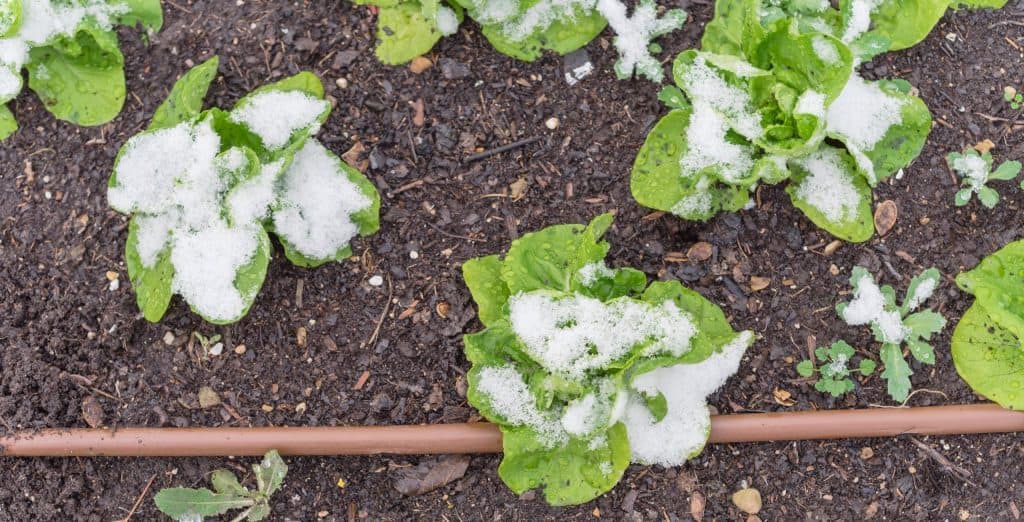
What Types of Lettuce to Plant
If you have a particular lettuce you want to grow, you can go to a garden center, nursery or order seeds online. Buy organic seeds when possible. For the price difference, organic seeds vs non-organic, it’s worth it.
Also, check your local public library. Many library systems have seed checkouts. They are usually seeds experienced gardeners have harvested. The good thing about them is they are typically local and can withstand the local climate. I have had immense success growing lettuce from seeds I got for free at the library.
If you aren’t as concerned about the variety you grow and just want to grow lettuce, you may want to factor in the days to maturity. This means how long it will take to harvest lettuce from seed.
Some varieties are ready to harvest in 30 – 45 days while others can take 65 days or longer. You may want to choose a faster maturing variety if you are planning later in the season (such as late spring) and want to avoid the hot weather or early frost.
Romaine lettuce is more heat tolerant than others. If you live in a hot climate, plant romaine in the spring. You may also choose to plant a fast-growing lettuce variety.
Consider also your tastes and what you want to use it for. If you enjoy wedge salads, grow head lettuce. If you don’t have a lot of space, consider growing romaine.
Heat Resistant Lettuce Varieties
- Black Seeded Simpson
- Buttercrunch Lettuce Bibb
- Royal Oakleaf
- Jericho Romaine
- Iceberg Superior
Cold Tolerant Lettuces
- Black Seeded Simpson
- Rouge d’hiver
Fast-Growing Lettuces
- Black Seeded Simpson
- Tango
- Bibb
- Jericho Romaine
- Oakleaf
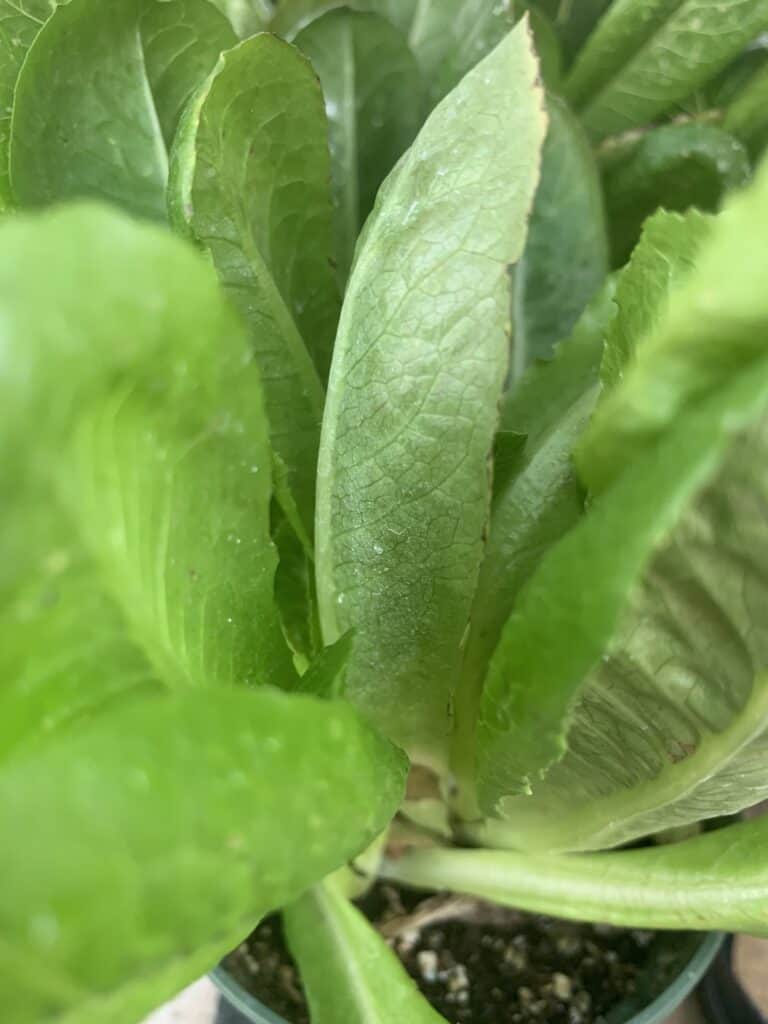
How Long Does Lettuce Take to Grow
Here are some days to maturity (DTM) for fast-growing lettuce varieties. Some varieties can take up to 80 days.
| Yugoslavian Red | 55 – 60 days |
| Black Seeded Simpson | 40 – 65 days |
| Pomegranate Crunch Lettuce | 50 days |
| Buttercrunch Lettuce Bibb | 50 – 75 days |
| Tango | 40 – 52 days |
| Freckles | 50 – 70 days |
Lettuce Growing Tips
Choose different varieties of lettuce for a beautiful garden and tasty flavors. They will look impressive in pots and in your salads. If you anticipate a cold spell, you can use a plastic row cover or cold frame to protect the plants.
If you’d like an extended harvest, you can plant your lettuce in successive plantings, advisably with a 10 to 14-day gap. An ideal variety to consider is Mesclun. It’s best when harvested young, in 35 days. It’s a cut and come again variety. (You cut it and it will regrow.)
However, to avoid harvesting dried lettuce in the summer, stop planting weeks before hot summer temperatures start to set in. You should start planting at the tail end of summer, so your lettuce can mature in the cool fall air.
The type of lettuce you’re planting determines how far apart you space them. If you’re sowing seeds straight into the soil, you should sow roughly 10 seeds per foot.
Consider using grow lights if you grow lettuce indoors.
Lettuce Companion Plants
Some vegetables you can grow with lettuce include corn, and root crops such as carrots, onions, beets, and radishes. Consider growing any of these alongside your lettuce plants if you have the space.
Other leafy greens you can grow with lettuce include arugula, spinach and Swiss chard. Avoid growing with plants in the cabbage family, such as kale, cauliflower, broccoli, and brussels sprouts. Learn about growing Swiss chard.
Other Ways to Grow Lettuce
There are many options for growing lettuce. In addition to growing in soil, consider lettuce hydroponics. Lettuce is one of the best plants for hydroponics. Lettuce also grows well in strawbale gardening.
FAQs About How to Grow Lettuce
How do you grow lettuce for beginners?
The most important thing beginner lettuce-growers can do is to learn your USDA hardiness zone, also called the climate zone. Once you find that number (it includes a number and an “a” or a “b”) look up when to plant lettuce in your hardiness zone.
You have to be sure you plant lettuce seeds during the right months for where you live or it will not grow. The frost in your area will determine this.
Then, find an area that will receive a minimum of 6 hours of sunlight a day. Decide whether you will grow in a garden bed, directly in the ground, or in a pot or container. Consider critters such as rabbits that may feast on the leaves.
Once you determine the ideal location, buy quality soil. Get the best soil you can afford. It should be well-draining and contain compost. I also recommend enriching existing soil with compost, vermiculite, and peat moss.
Will lettuce grow back after cutting?
Yes, lettuce will continue to grow as long as you gently snip the outer leaves. Don’t harvest lettuce every day. Give it a day or two in between to ensure optimum growth.
What is the best way to grow lettuce?
The best way to grow lettuce is to grow it in an area with nutrient-rich soil and in a place where rabbits and other pests won’t enjoy it before you do. Grow it somewhere that is convenient for you to water and to harvest. It should also be in an area that gets a minimum of 6 hours of direct sunlight.
Is lettuce easy to grow?
Yes, lettuce is easy to grow when you plant it in the right month for your hardiness zone. As an example, I live in growing zone 9b where the best time to sow lettuce seeds is January – February and September – November.
If you plant seeds toward the end of your growing season, choose a fast maturing variety so it grow before the weather changes (frost or extreme heat). Not only is it easy to grow, but once you pick the leaves, more grows back!
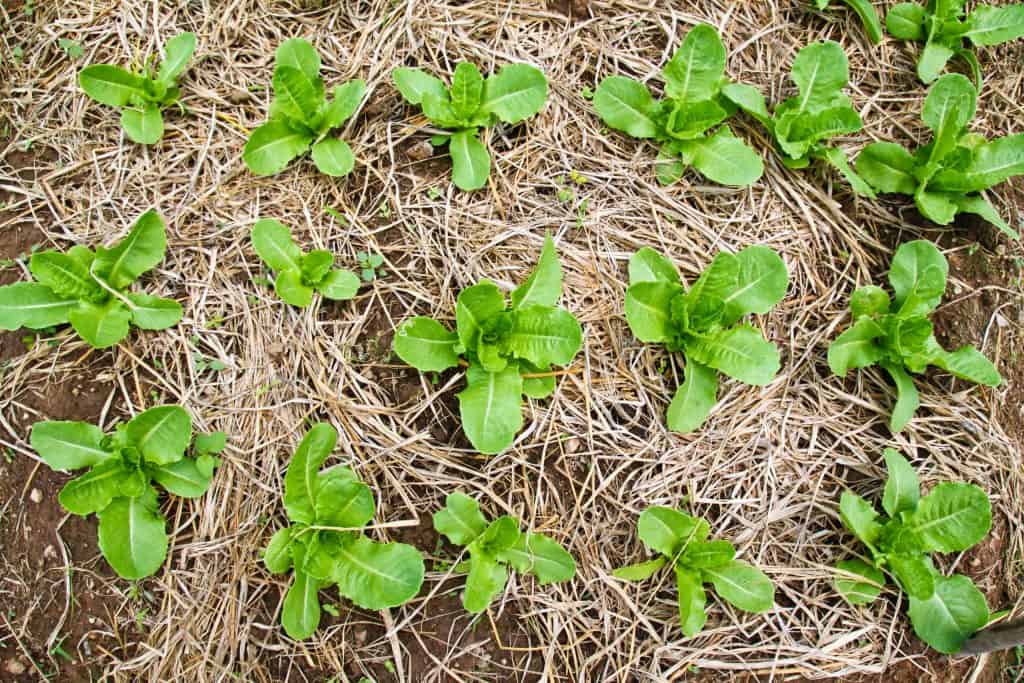
Conclusion
With nutrient-rich soil, sunlight and water, lettuce grows well. Add these leafy greens to your winter vegetables list to be able to grow year round. Being it’s a cool season crop, it’s a good way to round out growing because it grows well in the spring and fall. In some areas with moderate climates, you can grow lettuce in the late fall, throughout winter, and into early spring.
It’s rewarding to pick fresh salad greens. If you are a lover of salads, it might not be the most cost-effective option to purchase lettuce at the supermarket. Learning how to grow lettuce is a way to become self-sufficient and to live off the land.
Lettuce is one of the most widely planted vegetables in the United States. This vegetable is one of the easiest to grow, so you should be able to be successful.
If you are new to gardening or want to try something new, lettuce is a great vegetable to grow. It grows very well in containers which makes it ideal for gardeners who don’t have a lot of space.

